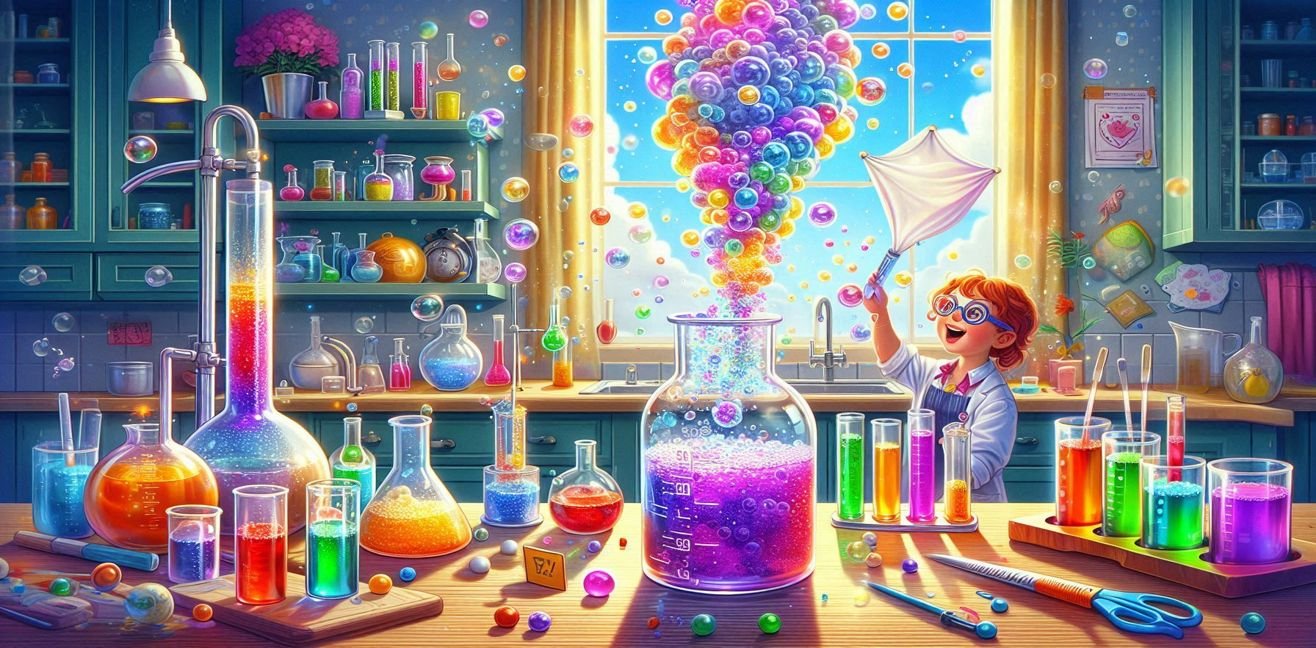Imagine, my love… you pour vinegar into a glass in your kitchen and add some baking soda. 🤯 Suddenly, foam erupts, gas bubbles dance, and you feel like a tiny science wizard. But this isn’t just a simple fun trick; behind it lies the fundamental principles of chemistry. Gas formation, acid-base reactions, pH changes… all can be observed outside a lab and are incredibly fascinating!
1️⃣ Dancing with Gases: Baking Soda + Vinegar Reaction
This classic experiment is both fun and highly educational:
- Materials: Baking soda (NaHCO₃), vinegar (CH₃COOH), glass or small bottle.
- Reaction:
NaHCO₃ + CH₃COOH → CO₂↑ + H₂O + CH₃COONa\text{NaHCO₃ + CH₃COOH → CO₂↑ + H₂O + CH₃COONa}NaHCO₃ + CH₃COOH → CO₂↑ + H₂O + CH₃COONa
- What happens: The acid (vinegar) reacts with the base (baking soda), producing carbon dioxide gas (CO₂), and foam erupts. This gas pressure rises in a closed system like a balloon, creating mini explosions.
💡 Scientific note: This simple acid-base reaction demonstrates gas formation and is a standard example in modern chemistry labs. It’s also ideal for understanding chemical kinetics and gas production, similar to a miniature volcano simulation.
2️⃣ Color Changes: Red Cabbage Juice as a pH Indicator
Want to combine visual fun with chemistry, my love? 🌈
- Materials: Red cabbage juice (natural pH indicator containing anthocyanins), lemon juice (acid), baking soda solution (base).
- What happens: Red cabbage juice changes color depending on the environment’s acidity or alkalinity, from red to purple or green to blue.
- Scientific explanation: Anthocyanin pigments in cabbage interact with hydrogen ions, changing color. pH < 7 → reddish, pH > 7 → greenish/blue hues.
💡 Fun fact: This experiment is a fantastic way to visualize environmental pH and chemical equilibrium principles at home. It also strengthens visual memory for students and kids.
3️⃣ Pressure and Safe Explosions: Tissue Rocket
Now, my love, let’s mix a little physics + chemistry!
- Materials: Small tissue, baking soda, vinegar, small plastic bottle.
- How it works: Place the tissue in the bottle, add baking soda, then vinegar. Carbon dioxide gas forms, pressure rises, and the tissue launches like a rocket.
- Scientific explanation: The generated gas creates pressure in the closed space. The pressure difference propels the tissue upward. This experiment is an excellent example for understanding gas pressure, force, and Newton’s third law.
💡 Tip: This is like a mini home rocket simulation. No astronaut suit required 😏
4️⃣ Chemistry in Action: Acid-Base and Molecular Interactions
- Chemical observation: The color changes and foaming in these experiments are actually observable manifestations of molecular interactions.
- Lessons learned: Molecular structure, acid-base reactions, gas formation, pressure and volume relationships… all can be experienced in a mini home lab.
💡 Fun fact: Exploding experiments are not just a “wow effect,” they also encourage scientific curiosity and reasoning. Next, you can try different acids and bases to observe color changes and measure gas production.
5️⃣ Final Words: Playing with Science
My love, chemistry isn’t scary; when done correctly, it’s a colorful, explosive, fun, and educational playground. When performing experiments at home:
- Wear safety goggles
- Protect your workspace
- Work with small amounts
- Be curious, observe, and take notes
Chemistry sometimes comes in the form of popping balloons, color-changing liquids, and flying tissues—but it always gains meaning through curiosity and the spirit of discovery. 🧪💖
So, my love… now you too can be a mini science wizard in your kitchen! ✨




